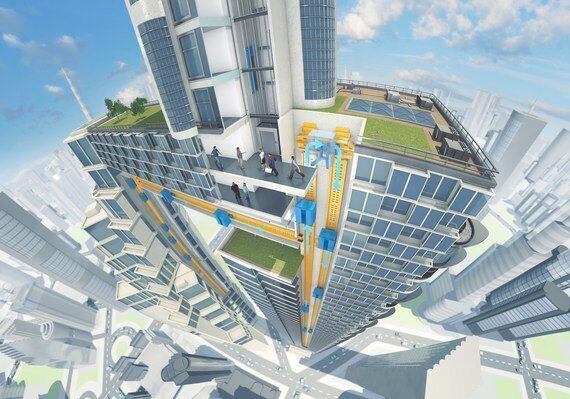It's 5.30pm and rush hour is in full swing on the London Underground. As we pile onto the escalator, battle to be one of the lucky few to get on the approaching train, and concertina ourselves into any small available space in the carriage, it's hard to comprehend that this was once a first-class service. When built in the 1800s, the London underground network was a world-first; an icon of innovative design and out-of-the-box thinking. But now serving 1.34 billion annual passengers - a figure which is growing every year - the service is under unprecedented strain.
This situation has been building for years, but has now reached critical level. Population growth and rapid urbanisation are putting more pressure on our cities than ever before and infrastructure that we have relied on for decades is becoming overwhelmed and unfit for purpose. The London sewer system is a well-known casualty, having been built in the Victorian era to meet the waste requirements of up to two and a half million people, but now struggling to cope with almost four times as many.
If these critical services fail to perform properly, the impact is huge. Think again of the London Underground Network and it is easy to understand how far the effects of service inefficiency can spread. If people can't get to work comfortably and on time, then both their individual level of productivity, and that of their business, are reduced. This has a significant effect on the wider economy.
Something has to change. These aging systems need to be brought in line with 21st century needs, and for this, smart technology is key. It has a critical role to play in shaping urban landscapes to ensure that cities of the future are as efficient and sustainable as possible.
Demand for new innovation is also enhanced by the changing function of these networks across the world. For example, as people's lifestyles evolve and commuters seek to achieve a better work/life balance, transport hubs are increasingly being developed into retail and dining locations; places people want to stay in, rather than leave quickly. Add to this the increased connectivity that modern internet technology allows us, and it is clear to see that networks like the London Underground and other metro stations around the world are quickly becoming key centres of human interaction. Finding solutions to ensure efficient mobility within these hubs is critical to delivering a comfortable environment.
For me, efficiency is best achieved in streamlining the way that people move in, out and around the train stations and platforms. My business is elevators - an often overlooked but much needed service for our built environment - and in underground networks I really do believe they can achieve our futuristic vision for revolutionising city transport.
Take the 'Willy Wonka' lift, for example. Named MULTI, it's the world's first rope-less elevator system which allows multiple elevator cabins to operate in the same shaft - and they move both vertically and horizontally. This new mechanism can increase capacity in each elevator shaft by as much as 50% - significantly lowering the time people have to wait for a lift, and increasing mobility as a result.
Applied to the underground system, the rope-less design opens up the possibility of not only building platforms at ever-deeper levels, but transferring people to these lower platforms more quickly too. The potential here is huge, and can be delivered here in London, as well as in metro hubs all over the world. Such a system fits well with the increasing trend for combined transport/leisure hubs too. People could swiftly be taken from a deep level platform up to ground level, and then up again to multiple storeys of a shopping centre. This seamless connectivity will play a pivotal role in keeping our cities moving more efficiently.
Roald Dahl with his ingenious glass elevator was decades ahead of his time, but the onus is now on city planners and developers to think now about what cities will look like in 15, 30, or even 50 years' time and how smart technology will play a vital role. As rapid urbanisation only continues, plans need to be made and solutions implemented that will ease the pressure on vital infrastructure.

Image author's own
